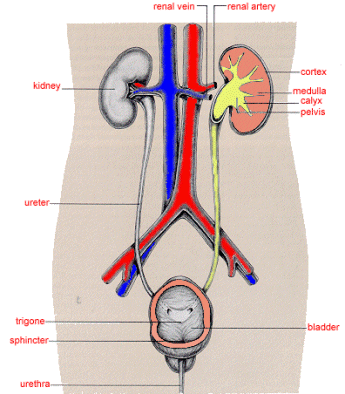
Body Fluids and Kidney
The kidneys contribute to homeostasis more extensively than any other single organ. They regulate the electrolyte composition, volume, osmolarity, and pH of the internal environment and eliminate all the waste products of bodily metabolism except for respiration-removed CO2. They accomplish these regulatory functions by eliminating in the urine substances the body doesn’t need, such as metabolic wastes and excess quantities of ingested salt or water, while conserving useful substances. The kidneys can maintain the plasma constituents they regulate within the narrow range compatible with life, despite wide variations in intake and losses of these substances through other avenues. Illustrating the magnitude of the kidneys’ task, about a quarter of the blood pumped into the systemic circulation goes to the kidneys to be adjusted and purified, with only three quarters of the blood being used to supply all the other tissues.
Students will be able to learn;
Components and quantitative measurements of body fluids, Fluid compartments, tissue and lymph fluid, Structure of the kidney and nephron, General function of the kidney, GFR and its regulation, Formation of urine including filtration, re-absorption and secretion, Plasma clearance., Mechanism of concentration and dilution of urine, Water and electrolyte balance with reference to the kidney, Role of the kidney in blood pressure regulation, Hormonal functions of the kidney, Acidification of urine and its importance, Acid base balance with reference to the kidney and Micturition and its control.


